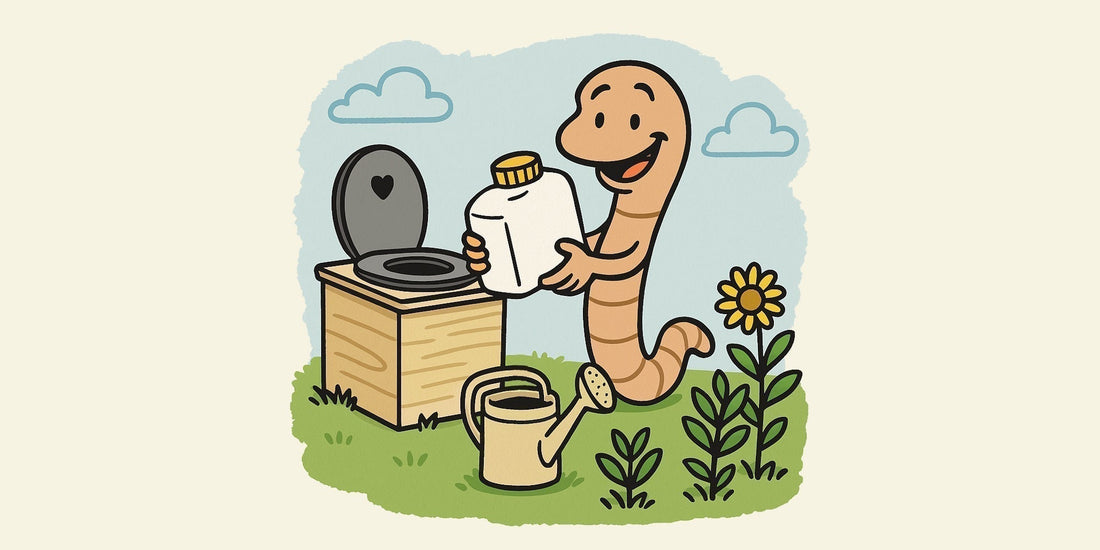
Emptying a composting toilet – this is how proper disposal works
With a traditional toilet, everything disappears at the touch of a button. With a composting toilet, everything stays there. It might take some getting used to at first, but it's actually pretty clever.
Emptying urine – when and how?
The urine is collected in a separate canister – ours has a capacity of 5 or 10 liters. Important: Please don't wait until it's full!
When the canister overflows, it's no fun - and it's easy to avoid.
To help you keep an eye on the fill level, our composting toilets feature a viewing window. This isn't just a design for us, but a true user-centric approach: You can immediately see when it's time to empty it.
Dispose of urine after two days at the latest
A little biology fact that is rarely learned in school:
Fresh urine has little or even a pleasantly mild smell – but after two days at the latest, it begins to stink.
The reason: Bacteria decompose the urine and release ammonia (NH₃), which causes the typical, pungent odor.
The solution: Empty it after two days at the latest!
Shit... I forgot to empty it!
It happens. Don't panic.
If your urine canister stays full for a while, thanks to the odor trap, you usually won't notice it right away – until you open it. And then: Wow.
Tip:
- Always open outside
- Do not smell directly
- Rinse with clean water, citric acid or baking soda solution
How can I dispose of urine?
Depending on the situation, you have several options:
- In the drain, in the toilet or at a disposal station
- On the compost heap or in the quick composter
- Diluted (1:10) as plant fertilizer
- On the go: discreetly tip it against a hedge or bushes
What happens to the solid part – the feces?
In the composting toilet, feces, litter and toilet paper end up together in the bucket.
It is only emptied when it is full – or when you do not use the toilet for a long time, for example during the winter break.
Feces: Compost or trash can?
The answer is: It depends.
residual waste if:
- you use non-compostable cat litter
- you take medication regularly
Compost if:
- you have access to a compost heap or rapid composter
- you use compostable bedding
- you want a closed, self-sufficient nutrient cycle
Conclusion: Self-sufficient, hygienic & sensible
With proper disposal, the composting toilet is not only suitable for everyday use, but also sustainable.
You become part of a true cycle – relieve the burden on sewage treatment plants and take control of your waste.
Sounds weird? Maybe. But also makes a lot of sense.
